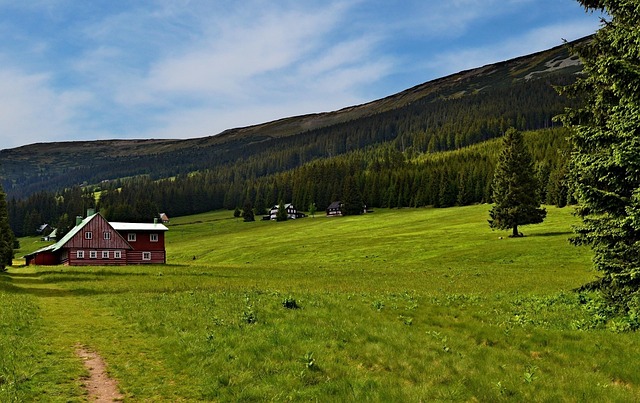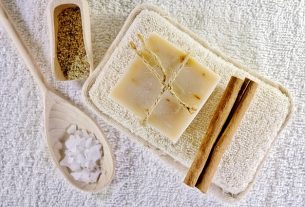Mulching and edging are Lawn Care and Landscaping practices that enhance lawn health, curb appeal, and maintenance efficiency. Mulch improves water retention, suppresses weeds, and customizes care needs, while edging prevents grass from encroaching on hardscapes, prolongs their life, and maintains clean borders. Regular application during the growing season, including sharpening tools, ensures a vibrant, well-maintained landscape throughout the year.
Transform your lawn into a picture of perfection with the simple yet powerful techniques of mulching and edging. This comprehensive guide delves into the art of maintaining a healthy, vibrant lawn, offering insights on understanding mulching benefits and exploring various types suitable for your needs. Learn effective edging techniques to create crisp, neat borders, enhancing your landscape’s appeal. Discover best practices for a routine that keeps your lawn looking its best, ensuring optimal growth and visual allure in every season. Elevate your lawn care and landscaping game with these essential tips.
- Understanding Mulching: Benefits and Types for Your Lawn
- Edging Techniques: Creating Neat Borders and Maintaining Lawns
- Best Practices for Effective Mulching and Edging Routine
Understanding Mulching: Benefits and Types for Your Lawn

Mulching is an essential practice in lawn care and landscaping, offering numerous benefits for your lawn’s health and appearance. It involves placing organic or inorganic material over the soil to retain moisture, suppress weeds, and enhance the overall aesthetics of your garden. By understanding the different types of mulch and their advantages, you can transform your lawn into a vibrant and healthy space.
One of the key benefits is improved water retention, which is crucial for lawn maintenance. Organic mulches, such as wood chips or straw, help insulate the soil, preventing moisture evaporation and keeping roots hydrated. This is especially beneficial during dry spells, reducing the frequency of watering. Additionally, mulching creates a barrier against weeds, blocking their sunlight exposure and hindering their growth. With regular applications, you can achieve a weed-free zone, simplifying lawn care tasks. Different types of mulch cater to various preferences and needs, ensuring your lawn receives the best care possible.
Edging Techniques: Creating Neat Borders and Maintaining Lawns

Creating neat and defined borders around your lawn is not just about aesthetics; it’s a crucial aspect of effective lawn care and landscaping. Edging techniques play a vital role in maintaining the overall health and appearance of your grass, as well as separating it from other plant life and hardscapes. One popular method involves using manual edging tools like string trimmers or edgers to trim along sidewalks, driveways, and flower beds, ensuring a clean and polished look. This process helps prevent grass from encroaching on these areas, prolonging the lifespan of your landscaping materials.
For more precise and detailed edging, consider investing in power tools designed for this purpose. These electric or gas-powered edgers can effortlessly cut through tough grass and weeds, providing a crisp, professional finish. Regular edging, typically done once or twice a month during the growing season, helps to maintain the integrity of your lawn’s borders, making it easier to manage and fostering a vibrant, well-maintained landscape. Incorporating these techniques into your lawn care routine is sure to enhance both the beauty and functionality of your outdoor space.
Best Practices for Effective Mulching and Edging Routine

Maintaining a well-groomed lawn involves a regular routine that includes mulching and edging, essential practices for any dedicated lawn care and landscaping enthusiast. To ensure optimal results, start by selecting the right mulch type for your grass species; organic options like wood chips or straw enhance soil health while suppressing weeds naturally. Apply mulch consistently around shrubs, trees, and garden beds, keeping it a few inches away from stems to prevent rot.
For edging, sharp tools are key. Regularly sharpen your lawn edger blades to achieve clean, precise lines that define your lawn’s edge against walks, driveways, and adjacent plants. Consider edging after mowing for neater results. Incorporate this into your seasonal lawn care calendar—spring and fall are ideal times—to maintain a polished, professional look throughout the year, enhancing both the aesthetics and health of your lawn and landscaping efforts.
Mulching and edging are essential practices in lawn care and landscaping, promoting a lush, well-maintained garden. By understanding the benefits of different mulching types and mastering edging techniques, homeowners can enhance their outdoor space’s beauty and health. Implementing these best practices ensures a neat, tidy, and vibrant lawn that becomes the envy of the neighborhood.



